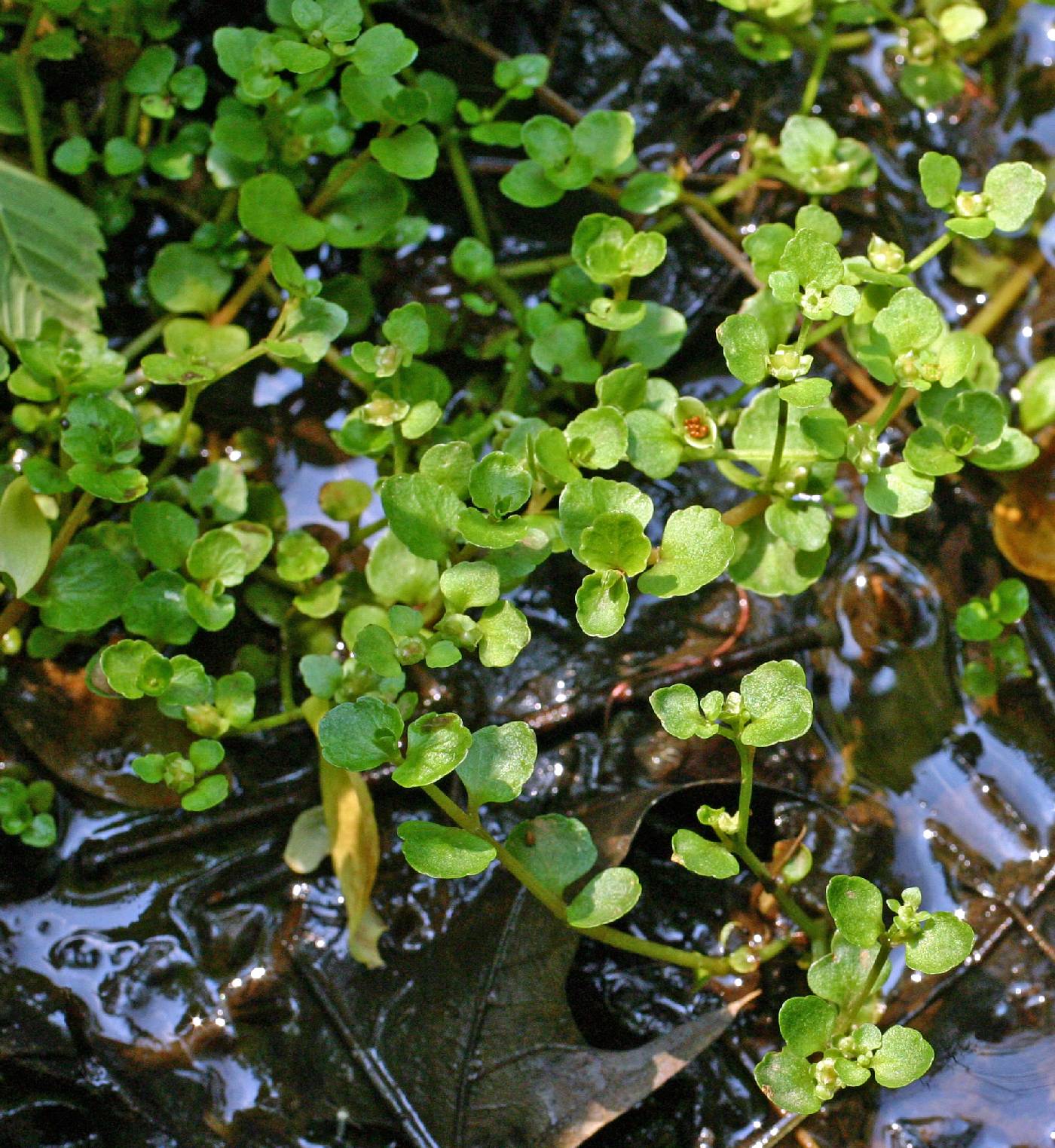Chrysosplenium
|
Family: Saxifragaceae |
Herbs, rhizomatous, stoloniferous, (rhizomes and stolons with functional leaves or stolon leaves reduced, nonfunctional, scalelike); caudex absent. Flowering stems repent, decumbent, or ascending to erect, leafy or leafless, (1.2-)2-30 cm (often as short as 2 cm in C. wrightii), glabrous or sparsely to densely villous. Leaves cauline or arising from stolons or rhizomes, opposite or alternate; stipules absent; petiole present, glabrous or villous; blade ovate, depressed-ovate, depressed-elliptic, reniform, flabellate, or, sometimes, nearly orbiculate, unlobed, base attenuate, cuneate, truncate, or cordate, ultimate margins subentire, crenate, crenulate, or crenate-dentate, crenae sometimes prominent and margins appearing ± lobed, apex obtuse, rounded, or truncate, surfaces glabrous or sparsely villous to villous; venation palmate. Inflorescences simple or compound cymes, from terminal bud in rosette, 2-30-flowered, sometimes flowers solitary, bracteate. Flowers: hypanthium 1/2-3/4 adnate medially or distally to ovary, 0.5-1.5 mm free from ovary, greenish or yellow-green; sepals 4, yellow, greenish yellow, green, greenish red, reddish orange, or purple, sometimes purple-spotted; petals absent; nectary disc conspicuous or apparently absent; stamens 2-8, usually 4 or 8; filaments lanceolate to narrowly oblong; ovary 1/2-3/4-inferior, 1-locular, carpels connate 3/4-4/5 their lengths; placentation parietal; styles 2; stigmas 2. Capsules (cuplike after dehiscence), 2-beaked (beaks divergent). Seeds dark brown or reddish brown, ellipsoid, ovoid, or spheroid, smooth. x = 11. A wide range of chromosome numbers has been reported in Chrysosplenium. M. Nakazawa et al. (1997) and D. E. Soltis et al. (2001b) hypothesized that these numbers arose from an ancestral base of x = 11, with multiple lines of dysploidy (reported as aneuploidy). The historical division of the genus into two major clades--opposite-leaved species and alternate-leaved species--is supported by flavonoid (B. A. Bohm and F. W. Collins 1979) and molecular data (Nakazawa et al.; Soltis et al.). Phylogenetic analyses using the rbcL and matK genes (Nakazawa et al.; Soltis et al.) have provided limited resolution for species-level relationships. The relationship of the alternate-leaved, North American species to those in Europe and Asia has not been examined in detail. Morphological similarities between the North American species and Eurasian Chrysosplenium alternifolium Linnaeus have caused some authors to treat C. iowense, C. rosendahlii, C. tetrandrum, and C. wrightii as infraspecific taxa of C. alternifolium. Each of them is maintained here as a distinct species pending further studies.
Fls perfect, regular, perigynous, 4-merous; sep spreading; pet none; stamens 4-8, inserted in the notches of an 8-lobed disk that nearly fills the center of the fl; filaments very short; carpels 2, united below into a unilocular ovary with 2 parietal placentas; styles protruding through the center of the disk, divergently curved; capsule 2-lobed, dehiscent across the top; inconspicuous, branching perennials with small, simple lvs, the fls small, terminal or in small terminal cymes, or appearing axillary by proliferation of the stem. 40, cool reg. Gleason, Henry A. & Cronquist, Arthur J. 1991. Manual of vascular plants of northeastern United States and adjacent Canada. lxxv + 910 pp. ©The New York Botanical Garden. All rights reserved. Used by permission. |

